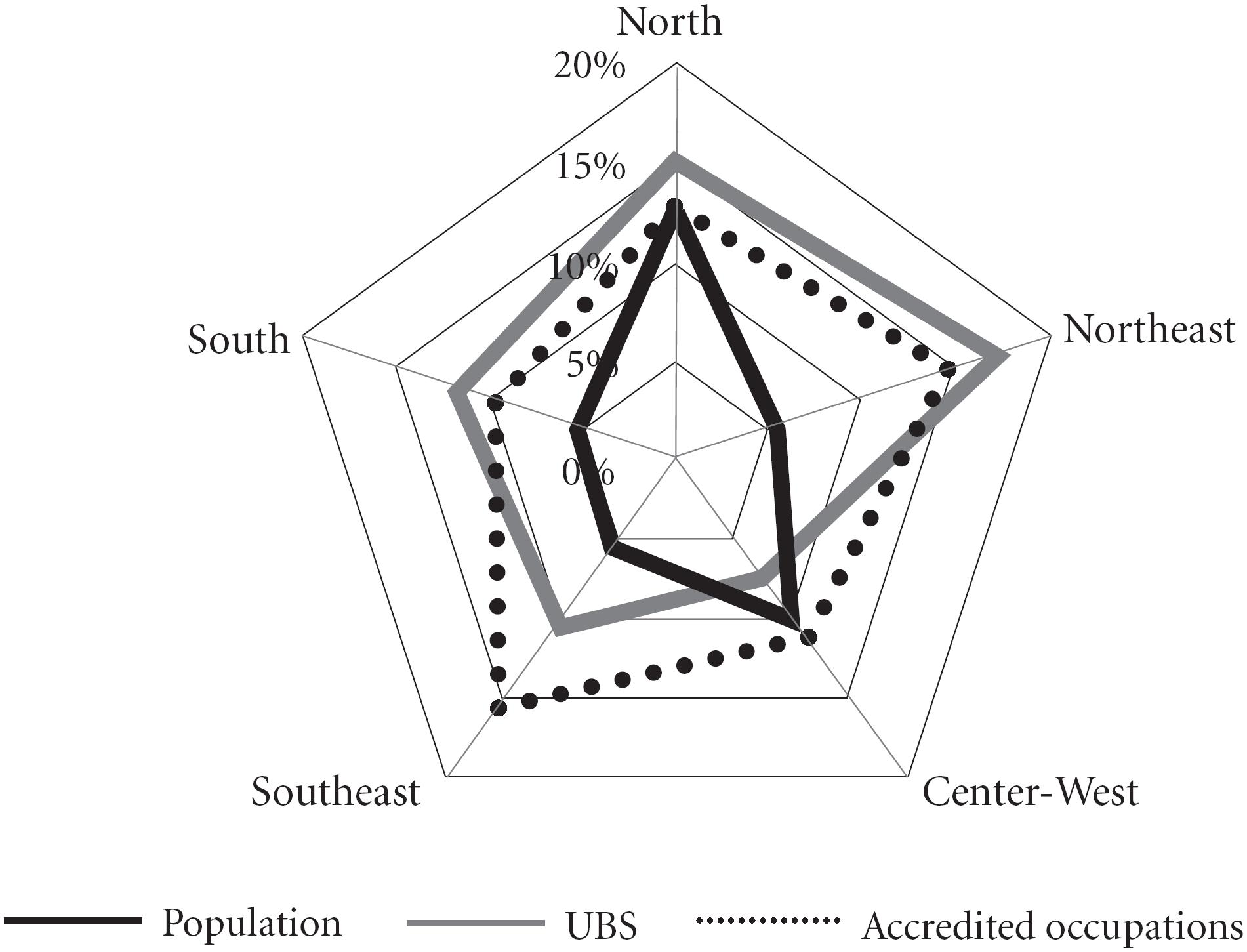Abstract
Primary care and the healthcare workforce can be considered the greatest challenges of SUS (Sistema Único de Saúde), principally in recent decades. This article aims to describe the growth and regional distribution of the professions requiring higher education registered in the primary healthcare units. This descriptive study with a quantitative approach is concerned with the 14 accredited professions in the five major regions of Brazil from 2008 to 2013. The data was collected from the national database of the Ministry of Health. Among the professional categories with the greatest rates of national growth are physical education teachers, nutritionists, occupational therapists, physiotherapists, and pharmacists. In the North region of Brazil, physiotherapy, social work, and speech therapy stand out as having the greatest growth rates; in the Northeast, physical education, physiotherapy, and occupational therapy; and in the Center-West, nutrition and physiotherapy; in the Southeast, nutrition and pharmacology; and physical education showed prominent growth in the South. The major losses occurred in the professions of biologist and veterinary doctors in all regions. In general, the professional categories that comprise the Family Health Support Nuclei, NASF, demonstrate greater growth rates than nurses and doctors.
Key words
Healthcare workforce; Basic Care Unit (UBS); Healthcare

 Source: Authors.
Source: Authors.
 Source: Ministry of Health - DATASUS (2014). Key: N = North; NE - Northeast; CW = Center-West; SE = Southeast; S = South.
Source: Ministry of Health - DATASUS (2014). Key: N = North; NE - Northeast; CW = Center-West; SE = Southeast; S = South.